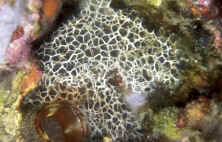spanko
Active Member
Originally Posted by Katsafados
http:///forum/post/3056117
I was thinking of doing it but wont it kill most of my bacteria colony in the filter if i wash them out?
Ha! You have just stumbled upon the contradiction on using canister filters and them becoming the evil "nitrate factory"!
The concern you have here is valid, leaving the media untouched in the filter has let it become part of your biofilter as well as mechanical. So when you actually do clean it now you have reduced your biofiltration capacity.
Mechanical filters must be cleaned often to avoid this, and to let the tank, rocks, sand and other surfaces house the biofilter.
In my tank the mechanical filters are the skimmer and a tray with filter floss and a sponge just before the return pump. (note that there are some chemical filters like Chemi Pure, Purigen, Phosphate pad but their cleaning schedule is different). I clean the skimmer out every two weeks, I change the filter floss every day.
Now does this relate to your ammonia concern, probably not as to me it would seem you ammonia would be zero but you may see nitrate values upon testing. Not sure what test kit you are using but could your comparison of the test sample to the control chart be skewed enough that you see .25 instead of zero? Cannot get straight in my mind that you would have the biofilter to bring the ammonia value down to zero then it would raise back up again with no bioload in your tank and after the tank being up for as long as it is.
http:///forum/post/3056117
I was thinking of doing it but wont it kill most of my bacteria colony in the filter if i wash them out?
Ha! You have just stumbled upon the contradiction on using canister filters and them becoming the evil "nitrate factory"!
The concern you have here is valid, leaving the media untouched in the filter has let it become part of your biofilter as well as mechanical. So when you actually do clean it now you have reduced your biofiltration capacity.
Mechanical filters must be cleaned often to avoid this, and to let the tank, rocks, sand and other surfaces house the biofilter.
In my tank the mechanical filters are the skimmer and a tray with filter floss and a sponge just before the return pump. (note that there are some chemical filters like Chemi Pure, Purigen, Phosphate pad but their cleaning schedule is different). I clean the skimmer out every two weeks, I change the filter floss every day.
Now does this relate to your ammonia concern, probably not as to me it would seem you ammonia would be zero but you may see nitrate values upon testing. Not sure what test kit you are using but could your comparison of the test sample to the control chart be skewed enough that you see .25 instead of zero? Cannot get straight in my mind that you would have the biofilter to bring the ammonia value down to zero then it would raise back up again with no bioload in your tank and after the tank being up for as long as it is.





